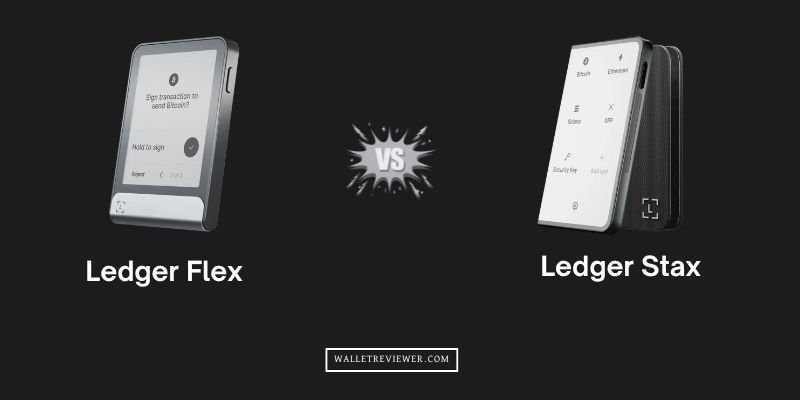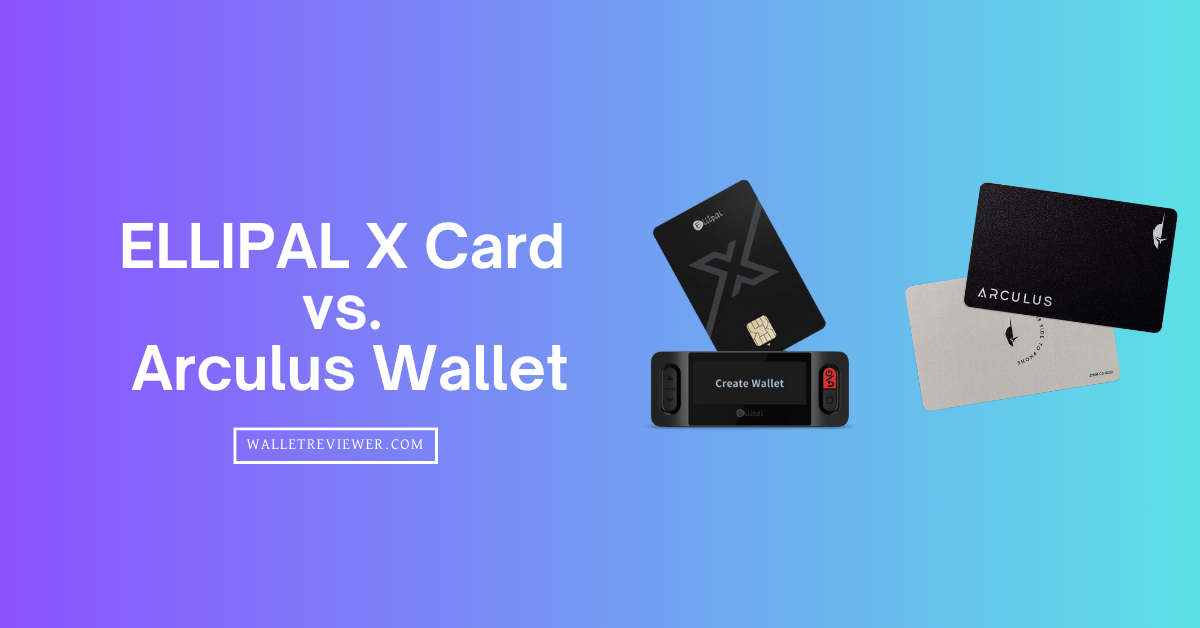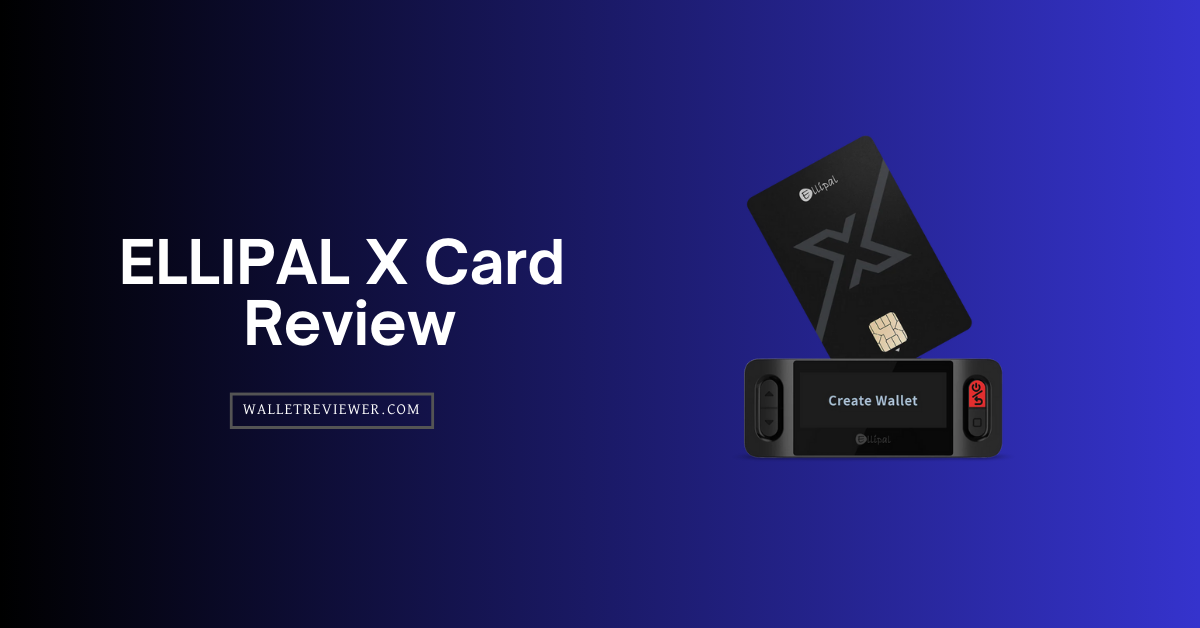Ledger has been a trusted name in the crypto hardware wallets space, and they’ve recently introduced two advanced devices: the Ledger Flex and the Ledger Stax. It can be challenging to determine which one is the best fit for your crypto security needs.
We’ve compared Ledger Flex vs Ledger Stax, diving deep into what makes each of these Ledger devices worth buying.
Our comparison covers all the important factors that truly matter, from their pricing and the specific security measures they employ to their build quality, the range of digital assets they support, and their overall ease of use for everyday transactions.
Quick Summary (Only Difference between Flex and Stax)
- You will get a large screen size and curved display with Stax. Its curved 3.7″ display, wireless charging, and magnetic shell offer a luxe, premium feel. Flex is more standard.
- Flex offers most core benefits: touchscreen, EAL6+ security, Bluetooth/NFC, custom lock screen – at ~$150 less ($249 vs. $399)
- Both support the same coins, OS, and security standards; no changes here.
- Choose Ledger Stax if you value design, a larger display, and wireless charging; otherwise, choose Ledger Flex, as there are no other differences.
Ledger Flex vs Stax: Quick Comparison
Here is a quick comparison between Ledger Flex vs Ledger Stax. We will explain everything in detail later:
| Criteria | Ledger Flex | Ledger Stax |
|---|---|---|
| Launch Price | $249 USD | $399 USD |
| Dimensions | 78.4 × 56.5 × 7.7 mm | 85 × 54 × 6 mm |
| Weight | 57.5 g | 45.2 g |
| Display | 2.84″ flat E Ink touchscreen, 16‑gray | 3.7″ curved E Ink touchscreen, 16‑gray, 672×400 pixels |
| Screen Cover | Gorilla Glass, anti‑glare | Ultra‑thin plastic, anti‑glare |
| Security Chip | CC EAL6+ Secure Element (ST33K1M5) | CC EAL6+ Secure Element (ST33K1M5) |
| Connectivity | USB‑C, Bluetooth 5.2, NFC | USB‑C, Bluetooth 5.2, NFC |
| Battery | 200 mAh, built‑in | 200 mAh, built‑in, wireless Qi charging |
| Battery Life | Weeks standby, ~10 h use/150 txns | Days standby, up to 10 h use/150 txns |
| Custom Lock Screen | Yes (images/NFTs) | Yes, with always-on and curved UI |
| Magnet Accessories | Magnetic folio sold separately | Includes a magnet shell; devices stack magnetically |
| Supported Assets | 5,500+ assets; 500+ in Ledger Live; NFTs | 5,500+ assets; 500+ in Ledger Live; NFTs |
| OS Compatibility | Windows, macOS, Linux, Android, iOS | Windows, macOS, Linux, Android, iOS |
| Security Features | PIN, 24‑word recovery phrase, optional Ledger Recover | PIN, 24‑word recovery phrase, optional Ledger Recover |
| Physical Build | Aluminium frame, plastic back | Aluminium frame, plastic back |
| Standby Use vs Active Use | ~weeks standby / 10 h active | Days standby / 10 h active |
| Price‑to‑Feature | Premium features, flat screen, lower cost | Top-tier with curved screen & wireless charging, higher cost |
What is Ledger Flex?
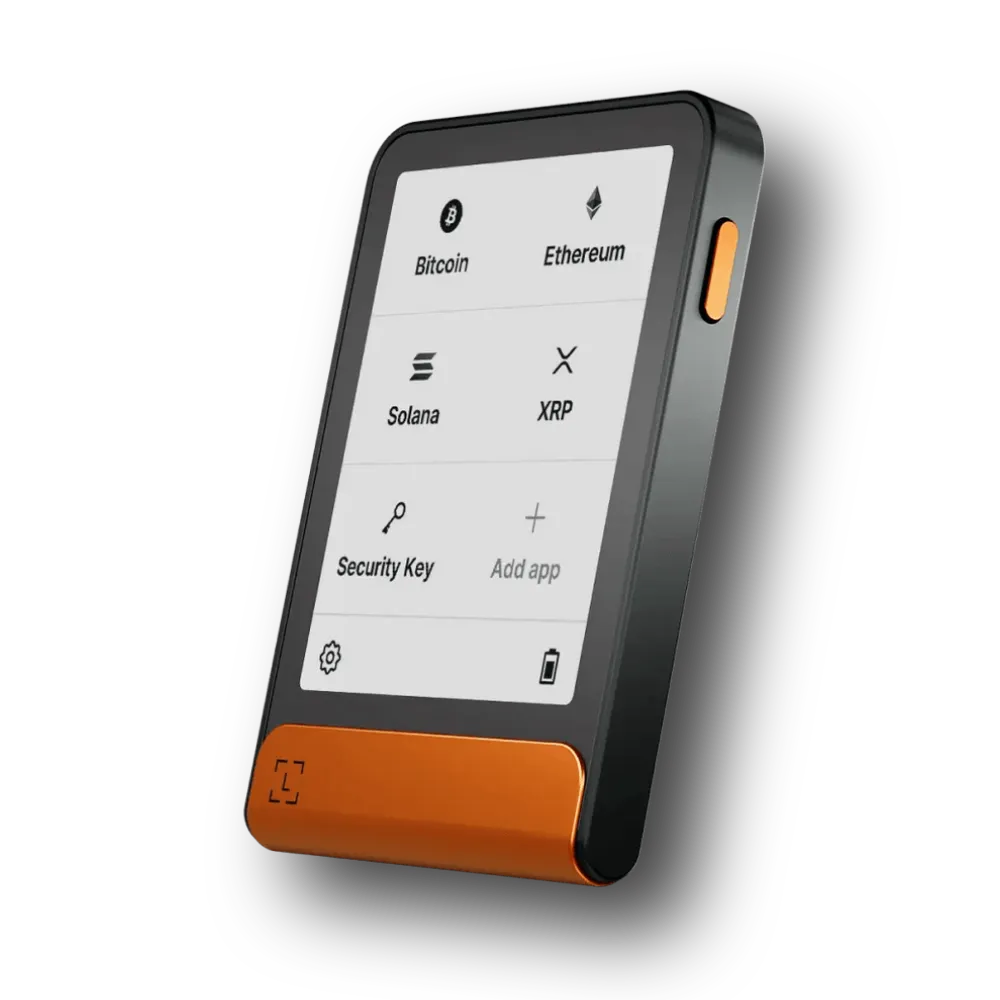
The Ledger Flex is a new hardware wallet designed for securely managing cryptocurrencies and NFTs. It features a 2.84-inch E Ink touchscreen, which allows for clear transaction reviews and interactions through taps and swipes.
This device is built with a Secure Element chip and runs on Ledger OS. The Ledger Flex supports over 5,500 different coins and tokens, including popular ones like Bitcoin (BTC), Ethereum (ETH), and Solana (SOL), along with NFTs.
It offers versatile connectivity options, including USB-C, Bluetooth, and NFC, making it compatible with various devices such as iOS and Android smartphones, as well as desktop computers. The battery provides up to 10 hours of normal use or approximately 150 transactions.
The device also allows for a customizable lock screen, displaying your favorite images or NFTs even when turned off. It comes with a USB-C to USB-C cable, a recovery sheet for your 24-word phrase, and a manual.
Read: Ledger Flex review
What is Ledger Stax?
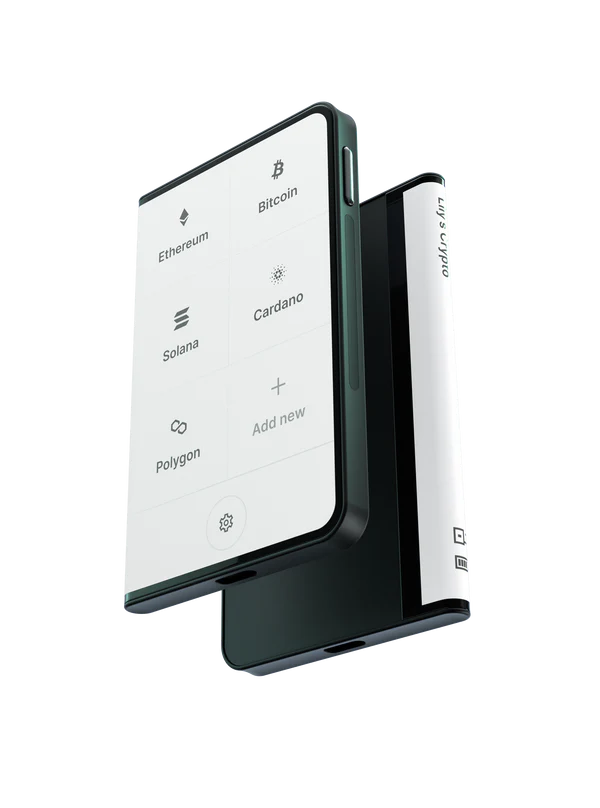
Ledger Stax is a credit card-sized hardware wallet. It measures 85 × 54 × 6 mm and weighs 45.2 g. Its main feature is a 3.7‑inch curved E Ink touchscreen that shows 16 shades of gray.
The device uses a Secure Element chip (ST33K1M5) with CC EAL6+ certification. It runs on Ledger’s custom operating system designed for secure crypto storage. It supports USB‑C and Bluetooth 5.2 for connectivity. It also includes NFC support.
Ledger Stax has a rechargeable battery. It lasts several days on standby and can perform up to 150 transactions or around 10 hours of active use on one charge. It also supports Qi wireless charging up to 10 W.
You can manage over 500 coins and tokens using the Ledger Live app, including Ethereum and Polygon NFTs. Thousands of additional tokens and NFTs are supported through third-party wallets. The device has a total storage capacity of 1.8 MB, with around 1.1 MB available for apps, settings, and a lock screen image.
Ledger Flex vs Stax: Key Differences and Similarities
Pricing
Ledger Stax costs about $399 (or €399). It includes a magnetic shell and wireless charging support.
Ledger Flex costs about $249. It does not include wireless charging or a built‑in magnet accessory.
You pay more for Stax because of its larger curved screen, stacking feature, and premium design. Flex gives nearly the same core features for a lower cost. You should choose Stax only if these premium features matter to you. If you want a secure touchscreen wallet at lower price, Flex is a better value.
Winner: Ledger Flex (Ledger Stax costs $399, while Ledger Flex is priced at $249. So, Flex gives almost the same features at a much lower price.)
Security Measures

Both devices use the same CC EAL6+ certified Secure Element (ST33K1M5) and run Ledger’s proprietary OS. Both support a 24‑word secret recovery phrase, a PIN, and optional Ledger Recover service.
You control keys offline. They also support 2FA via the Ledger Security Key app on mobile. Neither device yet has the ANSSI CSPN certification, although Nano X and Nano S Plus do. Despite that, the core security architecture is identical. That means both devices protect your crypto assets with industry‑standard hardware and software protections.
Winner: Tie (Both use the same CC EAL6+ secure chip, 24-word recovery, PIN protection, and Ledger Recover)
Build Quality and Design
Ledger Stax is thinner and lighter: 85 × 54 × 6 mm, weighing about 45 g. It has a curved 3.7″ E Ink touchscreen and built‑in magnets for stacking. It includes a magnetic folio case.
Ledger Flex is slightly larger: 78.4 × 56.5 × 7.7 mm, weighing about 57.5 g. It has a flat 2.84″ touchscreen. Magnets are only for attaching accessories.
Stax offers a premium feel and futuristic look. Flex has a rugged aluminum frame and practical design. Stax looks more modern; Flex stays functional and solid. (Read: Ledger Stax review)
Winner: Ledger Stax (Stax is thinner and lighter with a curved screen and built-in magnets. Flex is slightly thicker and heavier with a flat display)
Supported Assets & Crypto Features
Both devices support over 5,500 coins and NFTs via Ledger Live and third‑party wallets. Ledger Live supports around 500+ tokens and Ethereum/Polygon NFTs, while the rest are available via external wallet apps (over 50 supported).
You can manage NFTs, staking, DeFi, DApps, and passkeys. Both offer full multi‑chain asset support. The internal memory on both is around 1.8 MB total, with about 1.1 MB available for apps, lock‑screen images, and settings. This limits you to around 9–10 coin apps installed at once.
Winner: Tie (Both support 5,500+ assets, NFTs, staking, and DeFi with the same app storage and platform access.)
Connectivity & Compatibility
Both support USB‑C, Bluetooth 5.2, and NFC for versatile connections. You can connect to desktop (Windows, macOS, Linux) and mobile (Android, iOS, Ledger Live). Both work with Ledger Security Key for 2FA and passkey logins.
Ledger Stax adds Qi wireless charging (up to 10 W). Ledger Flex must charge by cable only. Both devices are compatible with the same software and platforms. There is no difference in OS support. Your device choice does not affect what you can connect to.
Winner: Ledger Stax – wireless charging gives it an edge in everyday use.
Setup & Everyday Use

You can set up both with the Ledger Live app. You need to create a PIN, write down your 24‑word recovery phrase, and set an optional lock‑screen image.
Stax’s larger screen helps you review transaction details easily; its curved display shows your image even when off. Flex’s flat 2.8″ screen is responsive but smaller.
In daily use, both let you sign transactions and view details. Some reviews say Ledger Flex feels more responsive; Stax may feel slightly slower when entering PIN or scrolling. Either device works well for normal crypto tasks.
Winner: Ledger Flex (Both use Ledger Live for setup. Stax has a bigger screen, but Flex feels more responsive when used.)
Battery & Charging
Both have a 200 mAh rechargeable battery. They last up to 10 hours of active use or about 150 transactions on a full charge. In standby mode, they last several days.
Ledger Stax supports Qi wireless charging, so you can charge without cables. Ledger Flex needs a USB‑C cable to recharge.
Other than charging method, their battery life is identical. You can expect the same number of hours and transaction capacity from both devices.
Winner: Ledger Stax (Battery life is similar on both. Stax has wireless charging; Flex charges only via USB-C.)
Ledger Flex vs Stax: Which is Beginner-Friendly?
Ledger Flex is more beginner-friendly because it gives you all core features at a lower price. It has a simple flat screen, smooth touch response, and easy setup using the Ledger Live app.
You get the same security, asset support, and connectivity as Ledger Stax. The interface feels faster during PIN entry and scrolling. Beginners may find the Stax’s curved screen and wireless charging nice but unnecessary.
Stax also costs $150 more, which may not be ideal for first-time users. If you’re new to crypto wallets and want a secure and simple use, Ledger Flex is the better and more practical choice.
Read more: Ledger vs Trezor wallet
Which Ledger Should You Buy?
If you’re looking for a highly secure hardware wallet with a modern touchscreen experience at a more accessible price point, the Ledger Flex is an excellent choice. It offers robust security with its Secure Element chip, supports over 5,500 assets, and connects via USB-C and Bluetooth.
However, if you desire a more premium experience, the Ledger Stax might be for you. It features a larger, curved E Ink touchscreen, adds convenient Qi wireless charging, and has a unique stackable design.
Looking to buy more hardware wallets, check these out:
- Best crypto hardware wallets
- Best cold storage wallets
- Ledger wallet review
- Best Bitcoin wallets
- Best Dogecoin wallets
- Best Solana wallets
FAQs: Ledger Flex vs Ledger Stax
What is Better, Ledger Flex or Ledger Stax?
Ledger Flex and Ledger Stax offer the same core features like security chip, asset support, and Bluetooth. The main differences are in design, display, and charging. Stax has a larger 3.7″ curved E Ink touchscreen and supports wireless charging.
Flex has a smaller 2.84″ flat screen and charges only with USB-C. Stax also includes built-in magnets and comes with a magnetic case. Flex does not.
Stax looks more premium, while Flex is more compact and affordable. If you want a better display and wireless features, choose Stax. If you want a practical device, Flex offers better value.
Is Ledger Stax worth the higher price compared to Ledger Flex?
No. Ledger Stax costs $399, while Ledger Flex is $249. Both offer the same security, token support, and connectivity. You pay more on Stax for a curved screen, magnetic design, wireless charging, and a sleeker look.
If you want premium features and better display experience, Stax can be worth it. But if you are only looking for safe crypto storage with basic features, Ledger Flex offers the same performance at lower cost.
Can Ledger Flex and Ledger Stax store NFTs and altcoins?
Yes, both Ledger Flex and Ledger Stax can store thousands of altcoins and NFTs. They support over 5,500 crypto assets using Ledger Live and third-party wallets. You can store Ethereum, Polygon, and other chain-based NFTs directly through Ledger Live.
Does Ledger Flex support wireless charging and Bluetooth connectivity?
Ledger Flex supports Bluetooth 5.2 for wireless connection to mobile devices, including Android and iOS. It also supports USB-C for wired connections to desktop platforms.
However, it does not support wireless charging. You will need to charge it using a USB-C cable. Only Ledger Stax has Qi wireless charging support.
Is Ledger Flex a good budget alternative to Ledger Stax?
Yes, Ledger Flex is a strong budget-friendly option compared to Ledger Stax. It costs $249, which is $150 less than the $399 price of Stax. It offers the same security chip, supports the same coins and NFTs, and connects using both USB-C and Bluetooth.
Which Ledger wallet is better for managing multiple crypto accounts?
Both Ledger Flex and Ledger Stax can manage multiple crypto accounts using Ledger Live. They support up to 5,500+ assets and allow you to install around 10 apps at a time, depending on size. Internal storage is 1.8 MB, with about 1.1 MB available for apps. There is no difference in memory or multi-account handling.
Where can I buy Ledger Flex or Ledger Stax?
You can buy both Ledger Flex and Ledger Stax directly from the official Ledger website. It’s the safest and most reliable place to order. You can also find them on trusted retailers like Best Buy and official Ledger stores on Amazon. We recommend never buying from third-party sites. Official sites are the best option.
Looking for crypto exchanges to buy Bitcoin:
